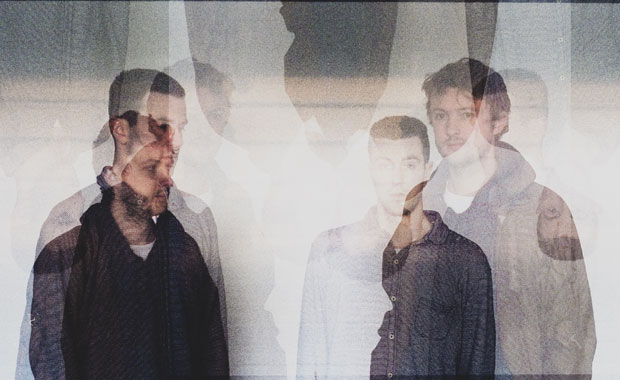Review: Portico Quartet, Art in the Age of Automation
By Mo Hafeez

Album opener ‘Endless’ initiates the listener with the classic Portico sound. The percussion of Duncan Bellamy opens up the track and remains a strong feature throughout the record – his playing is precise yet remains surprisingly free, providing a stable backdrop for the group’s signature instrument, the hang drum (played by Nick Mulvey, with some assistance Bellamy), upon which a floating and ethereal flute soars. The end-product is cinematic, a description that matches virtually any track on the album, and indeed most could easily slot into the soundtrack of a David Lynch. The delay-laden drums in the mid-section of the song breakthrough to introduce aurally moving strings, slowly bringing the track to its conclusion.
The title track utilises cellos and violins for similar impact, intertwining with saxophones and hang drums to blanket the listener. Live orchestral compositions bring out swells of emotion that electronical programming may not have been able to achieve.
The group also have skill when introducing faster paced percussion to the mix – ‘A Luminous Beam’ represents the prime example of this. A head-nodding groove is trotted out on the drums, filtering in and out with the bass whilst flutes and saxophones follow in hot pursuit. A sense of anticipation, thematically reminiscent of some sort of chase-scene in a film or TV show. Perhaps an ode to the techno and industrial inspirations taken from the likes of Burial, the songs represents the flexibility, the genre-bending that the album achieves. Avant-garde, hip-hop, classical, and post-punk are all visited during this exploration of jazz.
Closing track ‘Lines Glow’ showcases the Portico Quartet’s ability to build-up songs before unleashing wave after wave of sonically enveloping layers. Opening up with a fast-paced arpeggiated synth, drums soon join alongside, a cross-stick based beat opening up. The bass plays a structurally important role. Its melody is simple enough, sticking closely to a chose chord progression, but its low-frequency nature provides a more percussive aspect to the instrument. On first listening, it presents itself as an electronically produced sound, but, knowing the skill of the band, it would not be surprising to discover that a standard bass guitar is the true origin.
The simplicity of the bass provides ample room for a haunting yet uplifting saxophone to thread its melody, to be later met with an added ride cymbal percussively and the characteristic string section, culminating into a satisfying musical release which teases the listener for a few precious moments before the abrupt end to the track, and thus the album. Triumphant emotions are often felt throughout the album, reflecting the band’s rise from humble street performances to international festivals and shows.
The resultant record is one that stays true to the name of the album, a grand melting pot of instruments and techniques both acoustic and electronic, analogue and digital, futuristic and yet familiar, all whilst retaining a wholly organic sound, a sound that is still distinctly human. To shoebox this record into a single genre would be a mistake – an entire range of emotions are captured with little-to-no vocal work, showing, truly, that art still holds strong impact in today’s technologically modern society.



